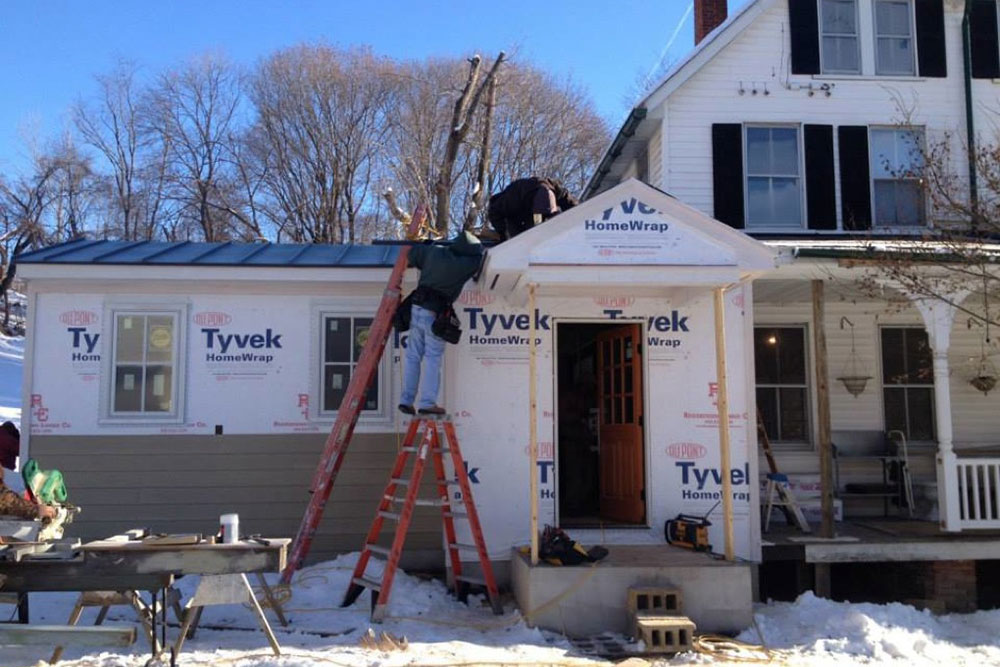It’s been a harsh, unpredictable winter. Not that we don’t expect winters to be hard to “work-around” – so the key is to be prepared. The first order of business is safety. If it’s too cold, it’s better to work another day. Safety and job quality are too important to compromise. Deliveries on ice-covered driveways can lead to dangerous situations, and of course, our crew’s safety is paramount. If the sun is out, the cold and snow are no bother. Easy for me to say, my tools were in my truck. But, the more time you spend outside the more your body adapts to the cold.
Here are a few tips for keeping warm on the job site.
Carhartt brand coveralls or bid overalls are the choice of our team. You can wear surprisingly thin layers under this insulated outer wear. Movement is key for safety. I wear a base layer of moisture-wicking material and usually a fleece or wool sweater under my insulated coveralls. That’s it.
I prefer a fleece neck roll over a turtle neck fleece or seater. If it gets warmer you can always take this off where a turtle neck, you can’t. Move anything you may need from your pants pockets to the outer pockets of your coveralls. I have my handkerchief and lip balm in my chest pocket. Wallet and money stays behind in my truck.
The head is easy: any warm hat will do. We have Carhartt wool hats with fleece lining. They have ear flaps which can lay down or roll up when the sun comes out. The guys like to wear theirs over ball caps which have visors for the sun.
Feet and hands are the toughest body parts to keep warm. I always start with a “warm foot in a warm boot”. Pick a good sock and a insulated boot but make sure your feet and boots are warm before lacing up. You don’t want to put your feet (warm or cold) in a cold boot. If your quality socks and boots are warm and your feet are warm all 3 should work together and stay warm. A boot does not create warmth, but it should retain the heat from your feet. Always start “warm”
Likewise with hand and gloves; we always start “warm and warm”. Fingerless, fleece lined gloves work well. Keep the areas where the blood runs close to the surface of your body warm and extremities should stay warm. The backs of your hands and wrists should be covered. If fingerless gloves don’t work use a Thinsulate brand glove. Your fingers need to be able to grab nails and materials.
So now you’re ready to go but are your materials, tools and equipment ready?
Common sense will tell you that any equipment that can be left inside will help it work better when moved outside. Pneumatic tools, air compressors and saws work better when they start their day above freezing. Again, start warm.
Cover your material with plastic or poly tarps. Keep the snow and frost off your material when possible. Read the temperature requirements for all glues, adhesives and paint and always store them in an area above 40- 50 degrees. If a temporary heat source is required make sure it is OSHA approved and used safely. Don’t use a make shift heater. It can cause more problems than it worth.

